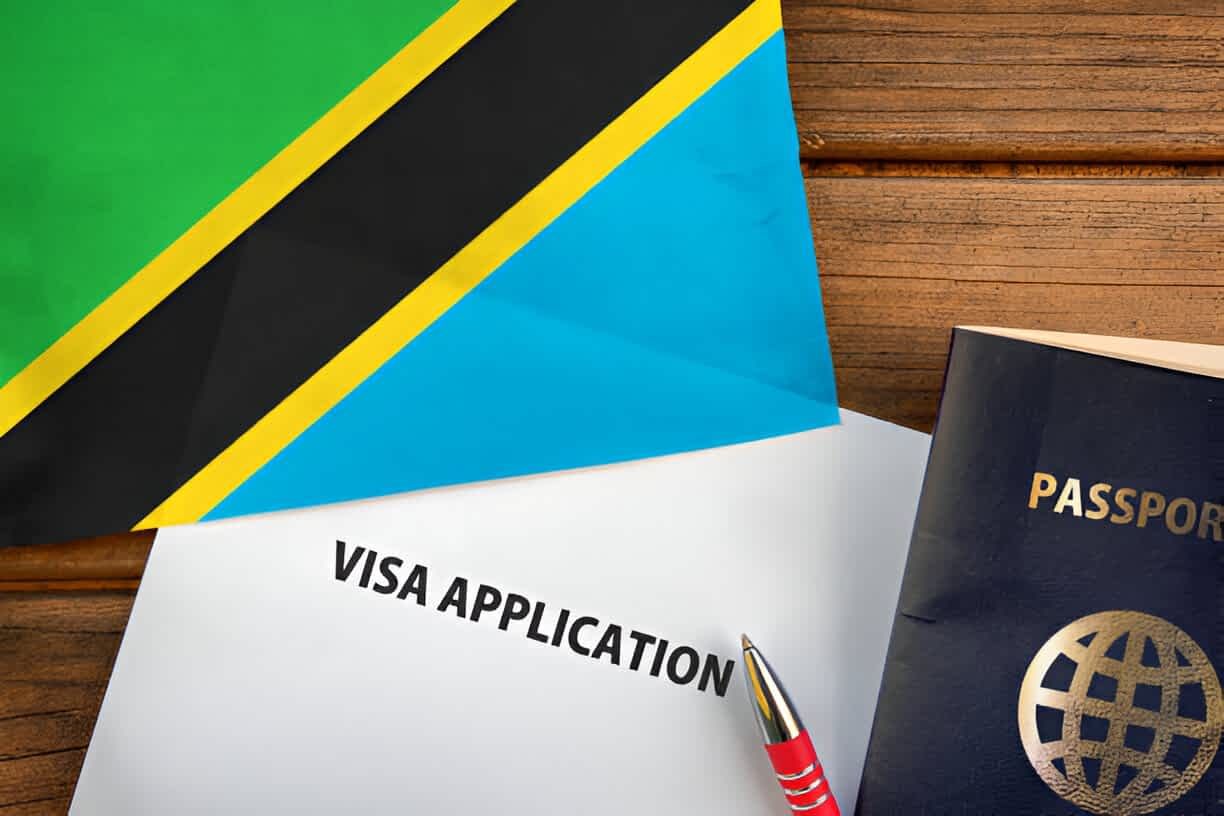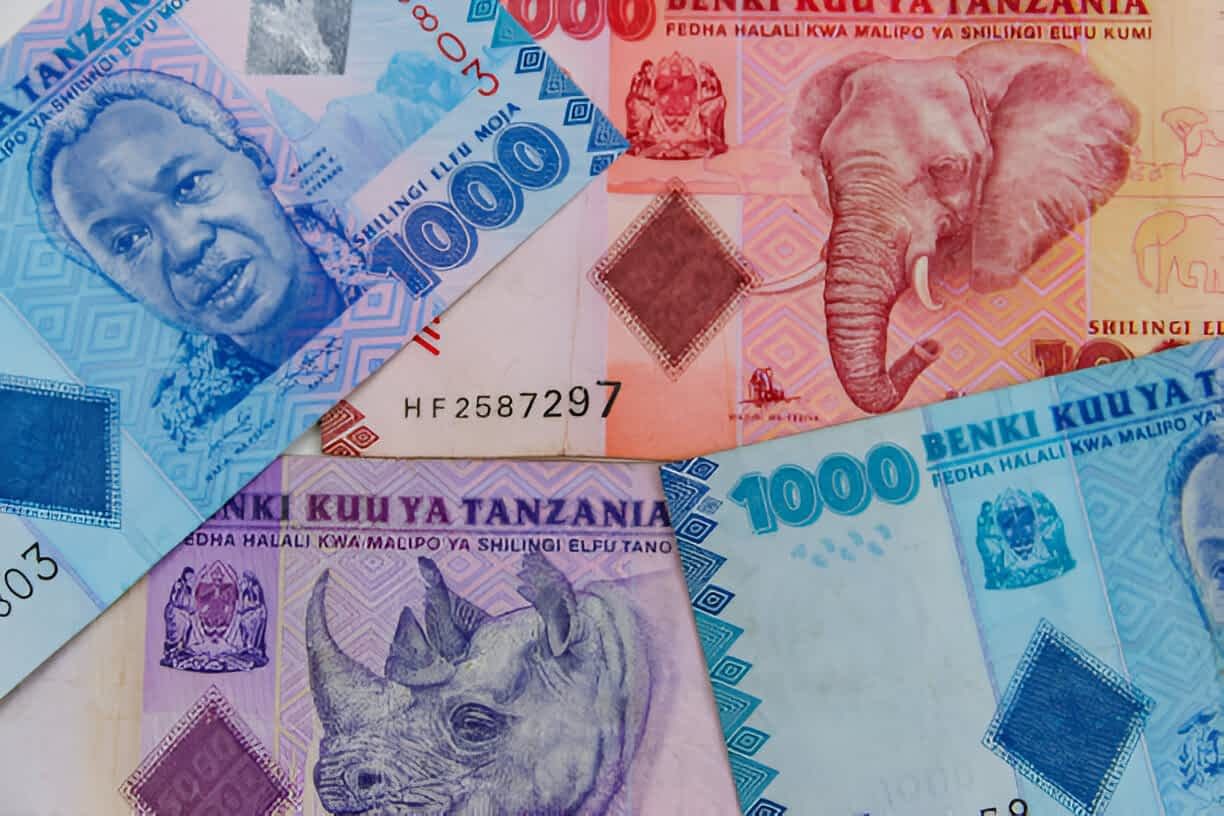Embark on the ultimate Tanzanian safari and immerse yourself in a land of breathtaking beauty and unmatched wildlife encounters. Journey through world-famous parks such as the Serengeti and Ngorongoro Crater, where endless plains teem with life. Witness the awe-inspiring Great Migration, as thousands of wildebeest and zebras sweep across the savannah, and come face-to-face with Africa’s most iconic species — from majestic lions and towering elephants to rare black rhinos. With its diverse landscapes and extraordinary wildlife, Tanzania promises a safari adventure you’ll treasure for a lifetime.

Discover Tanzania’s Wild Wonders — Explore legendary parks like the Serengeti and Ngorongoro Crater, where breathtaking landscapes meet extraordinary wildlife. Witness the epic Great Migration as thousands of wildebeest and zebras sweep across the plains, and encounter Africa’s most iconic species, including lions, elephants, and rhinos.
Visitors must have a valid passport with at least six months’ validity beyond their arrival date. Ensure your passport contains at least three blank pages for visas and entry/exit stamps. Tourist visas are typically valid for three months from the date of issuance.
 It is your responsibility to obtain all required visas before your tour departure. Visa requirements vary based on nationality, and processing may take up to six weeks.
It is your responsibility to obtain all required visas before your tour departure. Visa requirements vary based on nationality, and processing may take up to six weeks.
Visas on arrival are available at major entry points, including Julius Nyerere International Airport in Dar es Salaam, Kilimanjaro International Airport, and Abeid Aman Karume International Airport in Zanzibar. However, to avoid long wait times and potential delays, it is strongly recommended to apply for an eVisa before your trip. Be sure to carry a copy of your visa approval and travel itinerary for presentation to immigration officials.
Visa requirements may vary based on nationality and are subject to change. For the most up-to-date information, consult your nearest Tanzanian embassy or consulate. Additionally, ensure you adhere to the visa’s validity period, as overstaying may result in fines or other penalties.
While visa-on-arrival is guaranteed for citizens of European and American countries, it may not be available for all nationalities. Travelers from certain countries may be required to obtain a visa before arriving in Tanzania.
Overall, the visa application process for Tanzania is simple and straightforward. The availability of visa-on-arrival provides added convenience, allowing eligible travelers to complete their entry formalities upon arrival. However, it is always advisable to check specific visa requirements in advance to ensure a smooth travel experience.
For a more convenient visa application process, please visit the official Tanzania visa application website Click here to Apply for a Visa Here
Visitors from Referral Visa countries need to apply for a visa in advance, ideally two months before their safari dates. Please note that a visa on arrival is not available for these visitors, and the approval process may take longer than for other visas.
During the application, you will be required to provide an introduction letter. Serengeti Savanna Adventures will issue this letter only to eligible visitors after requesting some of your documents, including your passport. Our team of experts will assist you with all the necessary requirements and offer guidance throughout the application process.
 Tanzania is a beautiful travel destination, but it's important to take health precautions before your trip. We recommend consulting with your healthcare provider or a travel clinic to get advice on necessary vaccinations, including Yellow Fever, which is required if you're coming from or passing through a Yellow Fever-endemic area.
Tanzania is a beautiful travel destination, but it's important to take health precautions before your trip. We recommend consulting with your healthcare provider or a travel clinic to get advice on necessary vaccinations, including Yellow Fever, which is required if you're coming from or passing through a Yellow Fever-endemic area.
Malaria cases in Tanzania are now very rare, especially in the Northern Circuit, but it's advisable to take anti-malarial medication. To further protect yourself, use insect repellent and wear long-sleeved clothing, especially in the evenings. We also keep a first aid kit in our Safari Jeep, which includes some basic medications.
Lastly, we suggest purchasing travel insurance with medical coverage. Make sure your policy covers activities such as trekking and safaris, as well as emergency evacuation in case of unforeseen events.
Travelers arriving from Yellow Fever-endemic countries are required to have a Yellow Fever vaccination and must present their Certificate of Vaccination at the airport upon arrival.
If you are unable to provide a valid vaccination certificate, you may be denied entry or required to get vaccinated upon arrival and remain under public health observation for up to 10 days.
 The official currency of Tanzania is the Tanzanian Shilling (TZS). While U.S. dollars are accepted in many tourist areas, it’s advisable to carry some local currency for small purchases or when visiting more rural areas. ATMs are available in major cities like Dar es Salaam, Arusha, and Zanzibar, but may be limited in remote locations.
The official currency of Tanzania is the Tanzanian Shilling (TZS). While U.S. dollars are accepted in many tourist areas, it’s advisable to carry some local currency for small purchases or when visiting more rural areas. ATMs are available in major cities like Dar es Salaam, Arusha, and Zanzibar, but may be limited in remote locations.
Credit cards are widely accepted at most hotels, restaurants, and safari lodges. However, it's a good idea to check in advance, as some places may only accept cash. Keep in mind that credit card transactions may include additional fees, so it's smart to carry cash for small expenses. Also, notify your bank of your travel plans to avoid any issues with card usage.
Tipping is common in Tanzania, especially in the tourism sector. It is customary to give a tip of 10-15 USD to guides, drivers, and porters after a safari or hike to show appreciation for their services.
 Tanzania is a country rich in culture, with more than 120 ethnic groups. To ensure a rewarding and respectful visit, it's important to honor local customs. In areas with a Muslim majority, like Zanzibar, it's appreciated to dress modestly. Women should cover their shoulders and knees, especially when visiting villages or religious sites.
Tanzania is a country rich in culture, with more than 120 ethnic groups. To ensure a rewarding and respectful visit, it's important to honor local customs. In areas with a Muslim majority, like Zanzibar, it's appreciated to dress modestly. Women should cover their shoulders and knees, especially when visiting villages or religious sites.
When greeting people, a smile and a handshake are standard, and learning a few basic Swahili phrases such as "Jambo" (hello) or "Asante" (thank you) can help establish a friendly connection with locals. While taking photographs of people is generally allowed, it’s always respectful to ask for permission first.
Lastly, be conscious of environmental conservation, particularly in Tanzania's national parks. Listen to your guide’s advice, avoid littering, and stay aware of wildlife. Tanzania’s stunning natural landscapes are a treasure, and preserving them for future generations is a shared responsibility.
 Tanzania’s climate varies greatly by region and elevation, so planning your trip around your preferred activities is key. The dry season, from June to October, is the best time for wildlife safaris — including witnessing the spectacular Great Migration in the Serengeti — as animals congregate near water sources, making wildlife viewing easier and more rewarding.
Tanzania’s climate varies greatly by region and elevation, so planning your trip around your preferred activities is key. The dry season, from June to October, is the best time for wildlife safaris — including witnessing the spectacular Great Migration in the Serengeti — as animals congregate near water sources, making wildlife viewing easier and more rewarding.
If you’re dreaming of a beach holiday in Zanzibar, the dry season is your best bet, with sunny skies and calm seas ideal for diving, snorkeling, and relaxing by the ocean. The rainy season, from March to May, brings fewer tourists and lower prices, but keep in mind that heavy rains can make some roads and parks difficult to access.
For those planning to climb Mount Kilimanjaro, the best months to go are January to March and June to October, when weather conditions tend to be more stable. Even during these periods, be prepared for cold temperatures and chilly nights at higher elevations as you ascend this majestic peak.
While rain is possible, visiting Tanzania during the rainy season reveals a green, lush, and spectacularly beautiful landscape. Crops flourish on farms both large and small, and wildlife enjoys abundant food and water. Though animal sightings may be less frequent than in the dry season, you’ll still have plenty of opportunities to see wildlife amid vibrant, thriving surroundings.
The National Parks experience peak visitor numbers during July, August, September, as well as mid-December and early January. To witness the breathtaking wildebeest Great Migration crossing the Mara River in the Northern Serengeti, plan your visit between mid-July and September for the best chance to see this incredible event.
If you want the chance to discover and witness the wildebeest Migration and Calving Season in Southern Serengeti (Ndutu), you should come in mid-December, January, and early April.
 Here are the top 7 reasons why booking your Tanzania safari in advance is a great idea:
Here are the top 7 reasons why booking your Tanzania safari in advance is a great idea:
Booking in advance not only secures a hassle-free trip but also ensures a smoother and more memorable safari adventure!
Tanzania, located in East Africa, is celebrated for its breathtaking landscapes, diverse wildlife, and vibrant cultural heritage. From the towering summit of Mount Kilimanjaro to the sweeping plains of the Serengeti, Tanzania promises an unforgettable journey filled with adventure, wildlife encounters, and rich history.
 Tanzania’s history is a rich tapestry woven from ancient cultures, colonial influences, and the journey to independence. For thousands of years, indigenous groups such as the Maasai, Chaga, and Sukuma have called this region home. In the 19th century, Tanzania became a focus of European colonial ambitions, first under German rule and later the British. The modern nation of Tanzania was established in 1964 through the union of two independent states, Tanganyika and Zanzibar, both of which had gained independence from Britain in the 1960s. Since then, Tanzania has flourished as a peaceful and politically stable country, renowned for its dedication to conserving its natural heritage and fostering sustainable tourism.
Tanzania’s history is a rich tapestry woven from ancient cultures, colonial influences, and the journey to independence. For thousands of years, indigenous groups such as the Maasai, Chaga, and Sukuma have called this region home. In the 19th century, Tanzania became a focus of European colonial ambitions, first under German rule and later the British. The modern nation of Tanzania was established in 1964 through the union of two independent states, Tanganyika and Zanzibar, both of which had gained independence from Britain in the 1960s. Since then, Tanzania has flourished as a peaceful and politically stable country, renowned for its dedication to conserving its natural heritage and fostering sustainable tourism.
Tanzania, located just south of the Equator in East Africa, became an independent nation in 1964 through the union of Tanganyika and Zanzibar. The mainland of Tanganyika comprises over 99% of the country’s land area, while the Zanzibar and Pemba islands maintain their own semi-autonomous governments. Dodoma, designated as the official capital in 1974, lies centrally on the mainland. Meanwhile, Dar es Salaam—Tanzania’s largest city and primary port—serves as a bustling center of commerce and culture.
Tanzania’s formation as a united nation followed Tanganyika’s independence from British colonial rule in 1961 and Zanzibar’s liberation from Arab control in 1964. This blend of colonial influences—from Arab, German, to British—has deeply shaped Tanzania’s rich and diverse cultural heritage.
Tanzania is a vibrant mosaic of over 120 ethnic groups, each with its own unique traditions, languages, and customs. The largest are the Bantu-speaking peoples, while groups like the Maasai are famous for their semi-nomadic lifestyle. Along the coast, the Swahili people play a vital cultural and historical role. Swahili is the country’s official language, uniting diverse communities, while English is widely spoken in business, education, and tourism.
Tanzania’s culture is a vibrant tapestry woven from its rich tribal diversity alongside Arab, Indian, and European influences. The Swahili coast, in particular, showcases a unique blend of African and Arabic heritage, evident in its fragrant spices, lively music, and traditional dances. Visitors can look forward to warm hospitality in a society that values family, community, and deep respect for nature.
Tanzania has a tropical climate, characterized by a coastal belt of humidity and warmth, while the highland areas experience more temperate conditions. Generally, the country has two main seasons: a wet season and a dry season.
 Tanzania’s dry season, from June to October, is the prime time for safaris. During this period, the weather is hot and sunny with minimal rainfall, especially in the northern and central regions. Wildlife viewing is at its best, as animals gather around water sources, making sightings more frequent and exciting. This season also coincides with the Great Migration—an awe-inspiring event where millions of wildebeest, zebras, and gazelles traverse the Serengeti in search of fresh grazing, creating one of nature’s most spectacular wildlife shows.
Tanzania’s dry season, from June to October, is the prime time for safaris. During this period, the weather is hot and sunny with minimal rainfall, especially in the northern and central regions. Wildlife viewing is at its best, as animals gather around water sources, making sightings more frequent and exciting. This season also coincides with the Great Migration—an awe-inspiring event where millions of wildebeest, zebras, and gazelles traverse the Serengeti in search of fresh grazing, creating one of nature’s most spectacular wildlife shows.
Tanzania’s wet season runs from November to May, with the heaviest rains usually falling in April and May. While this period may be less popular for traditional safaris, it offers fantastic opportunities for birdwatching as migratory species arrive in large numbers. The lush, green landscapes during the wet season create stunning backdrops, making it a photographer’s paradise. However, travelers should be aware that heavy rains can make some remote roads difficult to pass, potentially limiting access to certain areas.
The Northern Circuit is the most popular safari route in Tanzania, attracting visitors from all over the world. Key destinations include:
The Southern Circuit is less frequented but equally rewarding, offering a more secluded and intimate safari experience. Some notable destinations are:

When you embark on a safari in Tanzania, each day brings unique and unforgettable experiences. Safaris are usually conducted in rugged 4x4 vehicles designed to navigate challenging terrains, guided by experienced professionals well-versed in local wildlife, culture, and ecosystems. Throughout your journey, you’ll encounter a diverse array of animals—from the legendary Big Five to graceful giraffes, zebras, cheetahs, and a vibrant variety of bird species.
Tanzania's national parks also offer opportunities for different types of safaris:
Whether you prefer a luxury safari or a more rustic camping experience, Tanzania offers options for all budgets, making it a versatile destination for every type of traveler.
Tanzania offers an extraordinary variety of experiences for every type of traveler. With its captivating history, vibrant culture, diverse wildlife, and breathtaking landscapes, it ranks among Africa’s premier safari destinations. Whether you explore the renowned Northern Circuit or venture into the more secluded Southern Circuit, Tanzania’s natural wonders and rich wildlife promise unforgettable memories that will last a lifetime.
Our detailed safari packing list ensures you're fully prepared for an unforgettable Tanzania safari. Focus on comfort, safety, and practicality to make the most of your experience in Tanzania's stunning wilderness.
 A Tanzania safari promises thrilling adventures filled with stunning landscapes and unforgettable wildlife encounters. To make the most of your journey, thoughtful preparation and packing are essential. At Serengeti GNU Adventures, we understand how important it is to be well-prepared. That’s why we’ve created a carefully curated packing list designed to ensure your comfort, safety, and convenience every step of the way.
A Tanzania safari promises thrilling adventures filled with stunning landscapes and unforgettable wildlife encounters. To make the most of your journey, thoughtful preparation and packing are essential. At Serengeti GNU Adventures, we understand how important it is to be well-prepared. That’s why we’ve created a carefully curated packing list designed to ensure your comfort, safety, and convenience every step of the way.
Climbing Mount Kilimanjaro—the highest peak in Africa at 5,895 meters (19,341 feet) and the world’s tallest free-standing mountain—is a dream come true for many adventurers. This challenging yet immensely rewarding journey demands careful preparation, strong physical fitness, and mental resilience. Whether you’re a seasoned trekker or a first-time climber, these expert tips will help guide you toward a safe and successful summit experience.
Tanzania offers an incredible range of activities that showcase its natural beauty and rich history, making it one of the top destinations for travelers seeking adventure and cultural experiences.
Discover Arusha – the gateway to Tanzania’s iconic safari destinations and a vibrant city full of charm. Before or after your safari, immerse yourself in a world of culture, adventure, and natural beauty. Wander through lively local markets, meet the warm-hearted locals, and savor authentic Tanzanian flavors. Venture into lush landscapes on day trips, explore fascinating cultural sites, or unwind in serene natural havens. Whatever your pace, Arusha offers the perfect mix of excitement, relaxation, and discovery, making it an essential stop on your Tanzanian journey.